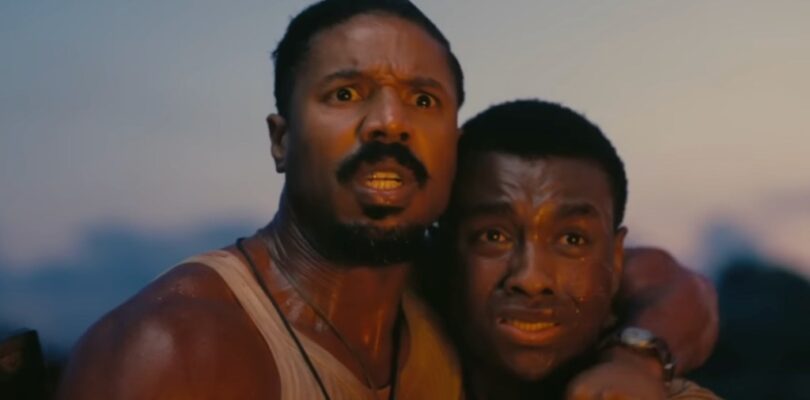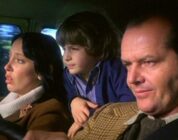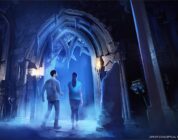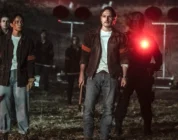Ryan Coogler’s Sinners is an instant horror classic, the sort of film you know will be included in lists of the best vampire films for decades to come.
Set in 1932 in the Mississippi Delta, the film features Michael B. Jordan in the dual role as twin brothers, Smoke and Stack (easily identified with conveniently different colored hats). After working as enforcers for Al Capone in Chicago (a prequel-worthy backstory), the brothers return to their hometown to open a new nightclub. But their plans take a dangerous turn when they face an unexpected threat: vampires.
Videos by VICE
The film is both a box office hit (stacking up over $247 million worldwide as of this writing) and a critical success, enjoying a 97% on Rotten Tomatoes.
The strength of the film lies in its ability to entertain as a lighthearted, period-piece vampire romp while also exploring deeper themes like the complexities of America’s so-called melting pot, cultural appropriation, and gentrification.
That said, director and writer Coogler is clearly a horror fan, and the influences on his new film run deep. Let’s take a look at a few classic films that swapped some DNA with this new hallmark of horror.
1. From Dusk Till Dawn
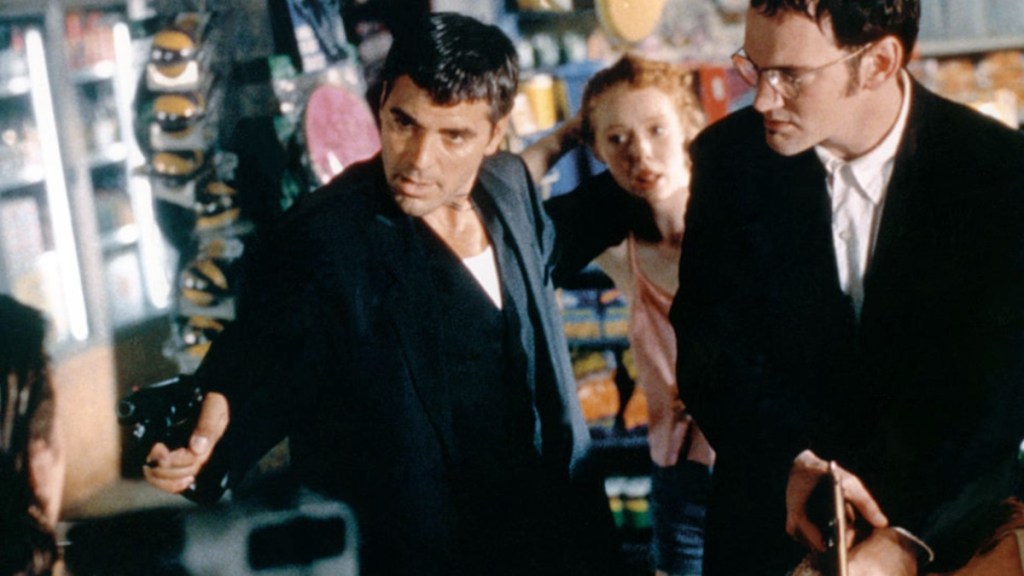
We’re getting the most obvious one out of the way first. The Quentin Tarantino-penned, Robert Rodriguez-directed From Dusk Till Dawn‘s mark is all over Sinners. The vampire showdown hit screens in 1996—prime time for a young Coogler (born in 1986) to soak up all the bloody brilliance.
The film undeniably shares much in common with Sinners. From Dusk Till Dawn also centers on a duo of criminal brothers—Richie and Seth Gecko, portrayed by Quentin Tarantino and newly minted movie star George Clooney. Richie is impulsive and volatile, while Seth exudes a calm, calculated demeanor—a dynamic reminiscent of Michael B. Jordan’s characters, Smoke and Stack, in Sinners.
And much like Smoke and Stack in Sinners, the Gecko brothers find themselves trapped in a rowdy bar overnight, fighting a horde of vampires.
While Dusk Till Dawn aims to be a lighthearted homage to 70s exploitation films—complete with a character literally named Sex Machine—Sinners strives to go beyond the blood-soaked thrills, exploring a few deeper themes amidst the chaos.
Key scene: Salma Hayek’s vampire queen, Santanico Pandemonium, wraps up a sultry, show-stopping dance by pouring liquor down her leg and letting the unhinged Richie (again, played by Tarantino, Hollywood’s resident foot enthusiast) sip it straight off her bare foot. Undoubtedly, this lives rent-free in the heads of at least a couple of generations of movie-going males.
Sinners is filled to the brim with sex, complete with a graphic, extended lesson on cunnilingus. It even manages to have a bit that rivals Hayek’s iconic vampire moment: When a vamped-out Mary (Hailee Steinfeld) spits a huge, glorious strand of saliva directly into Stack’s agape mouth.
2. Invasion of the Body Snatchers
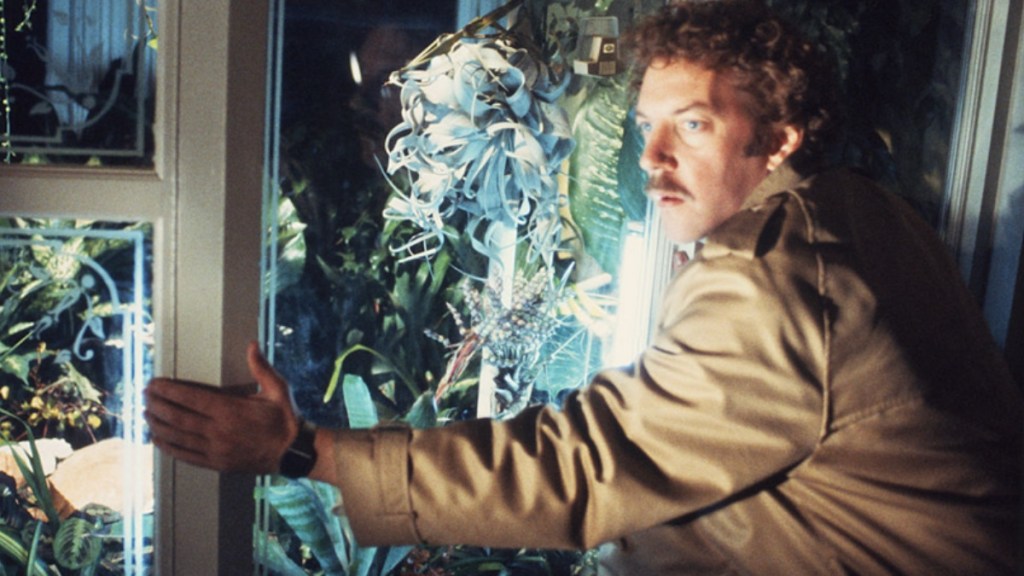
Sinners features vampires that share something of a hive mind; all of their experience is shared by their bloodlines. Remmick is drawn to the Juke Joint to convert prodigy Blues musician Sammie (newcomer Miles Caton) and absorb his skills into the brood.
Likewise, this is a major element of Jack Finney’s novel 1955 The Body Snatchers, which has been adapted to the big screen four times now, perhaps most effectively in the Donald Sutherland starring Invasion of the Body Snatchers from 1978.
The story follows alien seeds from space that grow into plantlike pods, creating perfect duplicates of humans while they sleep, retaining all their knowledge and memories.
However, these duplicates lack any human emotion or feeling. Once replaced, the original humans vanish completely, leaving only the emotionless pod versions behind.
When chasing the heroes, desperately fighting to stay awake to avoid being duplicated and replaced, the pod people employ an almost seductive logic. They argue that assimilation brings bliss, a life free from pain or fear. This mirrors the vampires in Sinners, who insist that becoming one of the undead simply means sharing a collective soul.
Key Scene: Matthew (Donald Sutherland) discovers his girlfriend (Brooke Adams) has fallen asleep and has become a pod person. “There’s nothing to be afraid of,” she tells him. “They were right. It’s painless. It’s good. Come. Sleep. Matthew.”
Much like after Remmick (who first converts two KKK peckerwoods) has turned most of the Black patrons of the Juke Joint into vampires, he leads them in a traditional Irish song (even though they were enjoying authentic Blues just moments before). It’s a gleefully unsubtle allegory for assimilation and gentrification, losing your soul to be a part of the masses.
3. Salem’s Lot
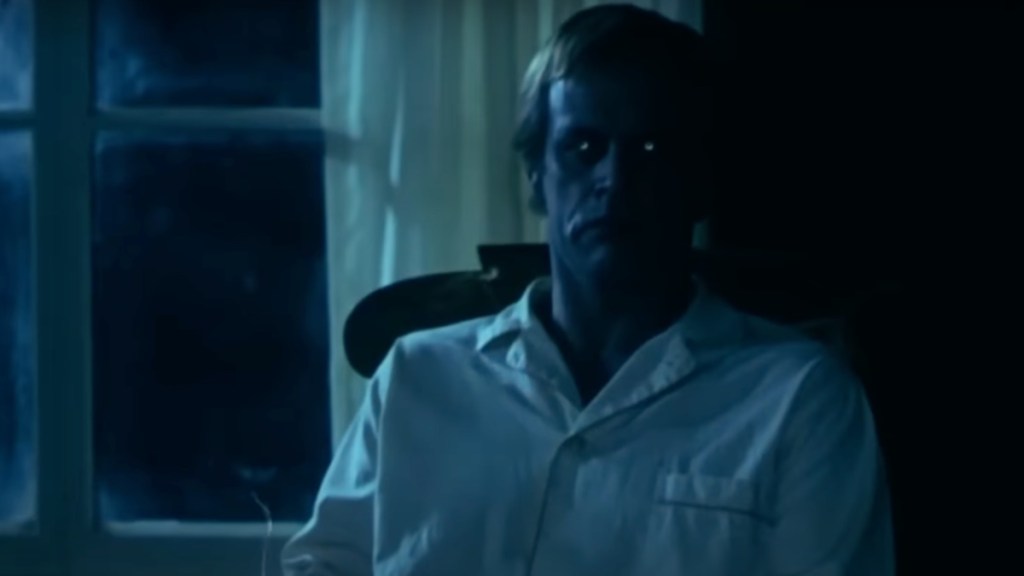
Stephen King’s second novel, a “vampires meet Peyton Place” tale, has inspired three adaptations to date. Among them, Tobe Hooper’s hauntingly atmospheric 1979 TV miniseries remains the standout.
Sinners carries forward several tropes popularized in Salem’s Lot, most notably the idea that vampires need not lurk in gothic castles of Eastern Europe. Instead, in King’s story, these supernatural predators invade a quiet suburban town in Maine. Similarly, Cooglar’s Sinners transports the bloodsuckers to 1930s Jim Crow Mississippi.
Secondly, and perhaps more importantly, Salem’s Lot has the newly infected vampires seek out loved ones as their next victims, which we see again and again in Sinners.
Key Scene: The iconic moment Danny Glick floats to Mark Petrie’s window and asks to be let in.
Sinners has several similar moments, but the only one that isn’t a spoiler (revealed in the trailer) is Stack’s lover, Mary, immediately doing her best to seduce and feed on him upon turning into a bloodsucker.
4. Night of the Living Dead
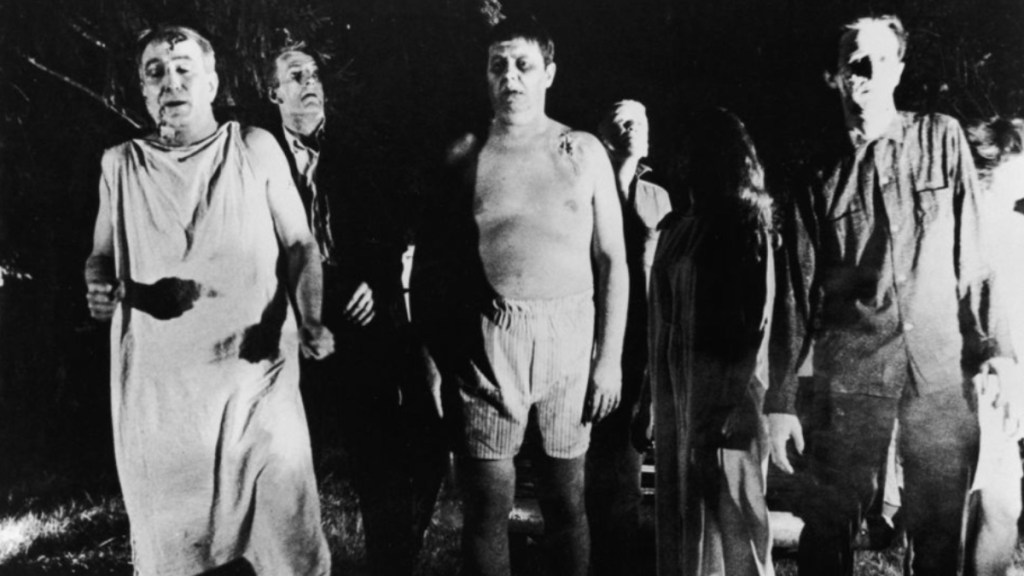
Horror enthusiasts might draw comparisons between Ernest Dickerson’s brilliant Demon Knight (1995) and Sinners. Both films center around a ragtag group of mostly ordinary people, barricaded inside and fighting to survive the night as relentless undead creatures attempt to break in and turn them into one of their own.
However, the grandaddy of that subgenre of horror is 1968’s Night of the Living Dead. Released just a year after white audiences clutched pearls seeing Sidney Poitier slap a white man in the face in In The Heat of the Night, George Romero’s zombie classic shows its Black hero, Ben (Duane Jones), smashing in the heads of countless Caucasian ghouls, seen around Drive Inns all through the South.
While the ragtag group of survivors in NOTLD tries to survive the night, boarded up in a desolate farmhouse, heated factions form. One group wants to hole up in the cellar, while another wants to be more proactive and attempt an escape. The tension inside with the humans matches the danger of the flesh-eating ghouls outside.
Likewise, Sinners features a similar dynamic. Some characters simply want to hole up for the night. Meanwhile, others want to venture out to check on loved ones.
Key Scene: At the climax of Night of the Living Dead, the ghouls breach the doors and windows of the house. Amid the chaos, Ben’s tense standoff with his adversary, Harry (Karl Hardman), reaches a breaking point when Harry seizes Ben’s gun. However, Ben quickly overpowers him, reclaiming the weapon and fatally shooting Harry.
SPOILERS: The vampires in Sinners are supernaturally unable to enter a space uninvited. Let’s just say someone in the group who doesn’t want to stay holed up invites them all in…
5. The Thing

Of course, horror fans know where I’m going with this one.
John Carpenter’s 1982 film The Thing, much like Christian Nyby’s 1951 classic The Thing from Another World, follows a team of American researchers in Antarctica who come face-to-face with a sinister extraterrestrial life form. This “Thing” has the terrifying ability to assimilate and perfectly mimic other organisms, blurring the line between ally and enemy.
Paranoia takes hold as the heroes, led by MacReady (Kurt Russell) and Childs (Keith David), grapple with the terrifying uncertainty of who remains human and who has been consumed by the alien entity. Much like Night of the Living Dead and Demon Knight, The Thing also depicts a group of survivors barricaded in an isolated setting, battling a relentless supernatural threat.
Key scene: MacReady uses a hot wire to test the blood of each surviving researcher, revealing whose blood reacts unnaturally (and who is “the Thing”). This mirrors the scene in Sinners where Smoke and Annie (Wunmi Mosaku) demand the survivors at the Juke Joint eat a clove of garlic to prove they aren’t vampires.
6. Blade
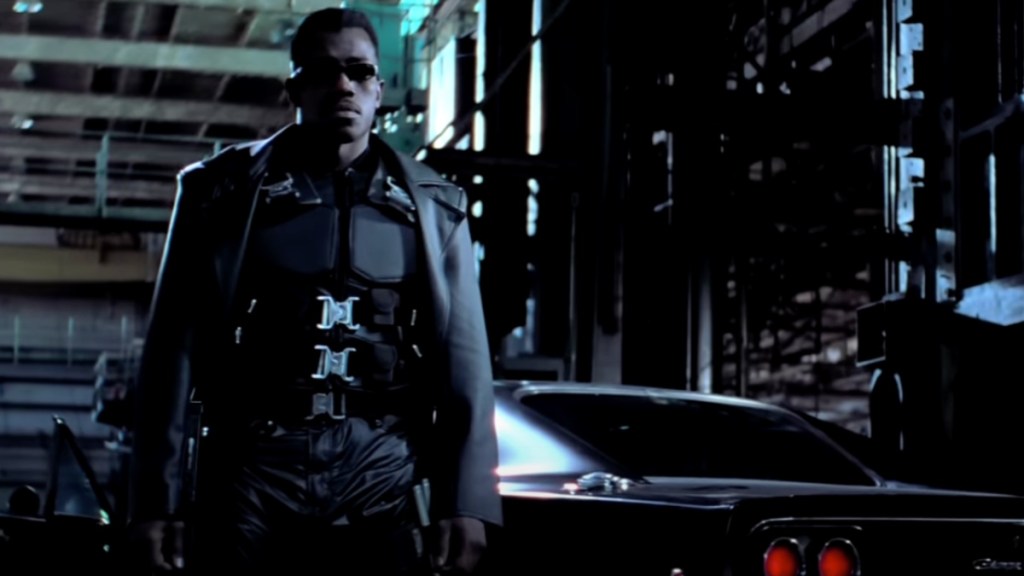
Many vampire flicks and TV shows had the bloodsuckers coded as sexy, from Bela Lugosi to Salma Hayek. However, it was 1998’s Blade that put the idea that vampires didn’t need to be old-world into the mainstream. Like the vamps in The Lost Boys a decade earlier, Blade’s vampires are on the cutting edge of pop culture. In this case, they wear the latest fashion and take part in epic raves. With that sort of vibe in mind, it only stands to reason that Sinners‘ lead vampire Remmick wants inside the Juke Joint: circa 1932 Mississippi, it’s the place to be.
Key Scene: A rave overrun by vampires turns into a literal orgy of blood when the sprinklers flash on, raining down crimson vital fluids. The fun only stops when the titular hero (Wesley Snipes) crashes the party.
Likewise, a dreamlike sequence involving Sammie leading a prolific Blues performance is offset by showing the approaching Remmick.
7. Near Dark
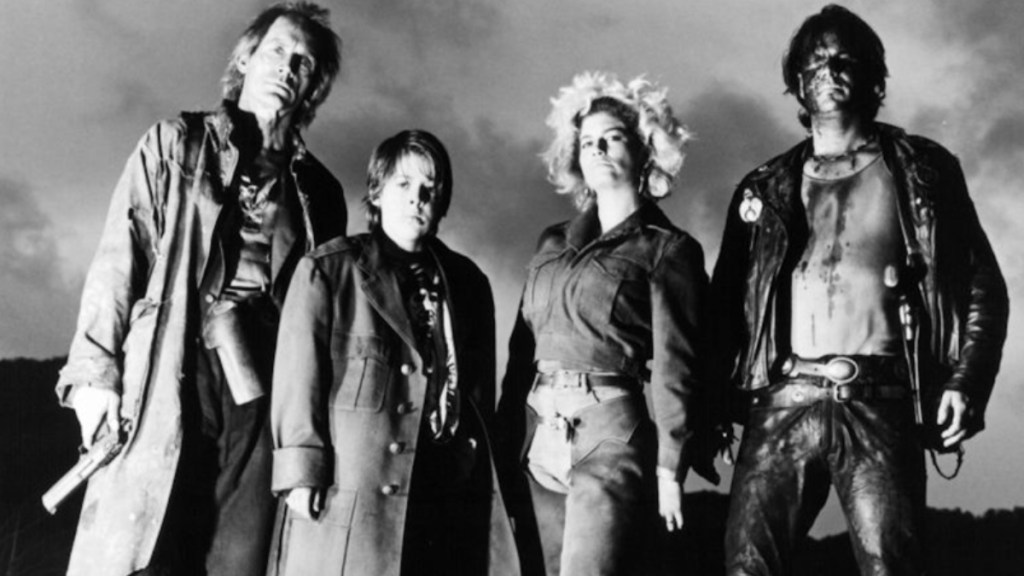
While films like Blade and The Lost Boys might make it seem cool, even fun to be a vampire, other films point out that being undead isn’t always an all-night party. Perhaps chief among the vampires-as-bottom-feeders subgenre is 1987’s Near Dark, directed by future Oscar winner Kathryn Bigelow.
When we first see Remmick in Sinners, he’s desperate, wounded, and fearful of the Sun burning his flesh. It’s a hint of a larger story in which vampires dwell in the lowest rung of existence, constantly on the move, on the outside of humanity looking in.
In vampire gang in Near Dark is decidedly unglamorous. Lance Henriksen, Joshua Miller, Jenette Goldstein, Bill Paxton and Jenny Wright’s dysfunctional vampire family seem coded as wandering hillbillies. Henriksen’s Jesse Hooker even boasts of fighting for the Confederacy during the Civil War. They’re unkempt, clad in clothes likely taken from their victims. They’ll claim it’s thrilling to live off the grid, traveling from town to town, leaving chaos in their wake. But let’s face it—this isn’t the kind of group most teenagers would eagerly choose to join.
Key scene: Bill Paxton’s vicious vampire character Severn declares the victim he just eviscerated is “finger-licking good.” It’s the sort of reckless, gleeful abandon Hailee Steinfeld’s vamped out Mary channels when she says, “Ooh. We gonna kill every last one of you…”
‘Sinners’ makes its influences its own
Influences aside, Coogler and company meld all of the above and make it their own, much like when we see the 90s versions of vampires Mary and Stack long out of Remmick’s grasp in the film’s epilogue. No doubt, future generations of aspiring filmmakers will do the same with Sinners.
Sidebar: If Miles Caton doesn’t team up with Buddy Guy for a Sinners medley on the Oscar stage next year, the Academy might as well pack it up.

